27.4: Key Environment Elements
- Page ID
- 142388
Safety
Creating spaces for infants and toddlers that ensure safety is one of the most important considerations when designing an environment. Safe settings enable infants’ and toddlers’ freedom of exploration and support their developing sense of self. For health and safety reasons, it is essential that eating, food preparation, sleeping, and diapering areas are separate from play areas.
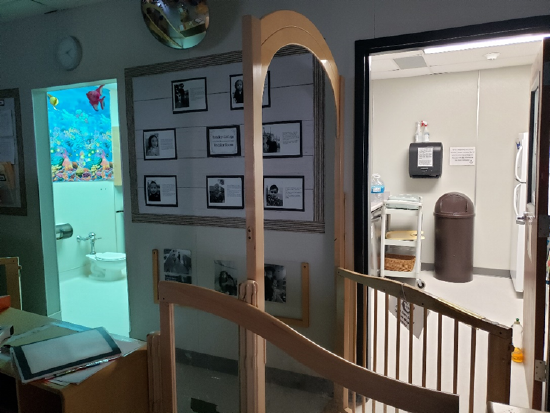
Safe environments allow a caregiver to spend less time monitoring infants’ and toddlers' safety and frees them up to spend more time on interactions and building relationships. When the environment constantly causes a caregiver to move the infant to a safer location, the child’s learning and engagement are interrupted. Instead, set the environment to allow freedom of movement and engagement without excessive restrictions.
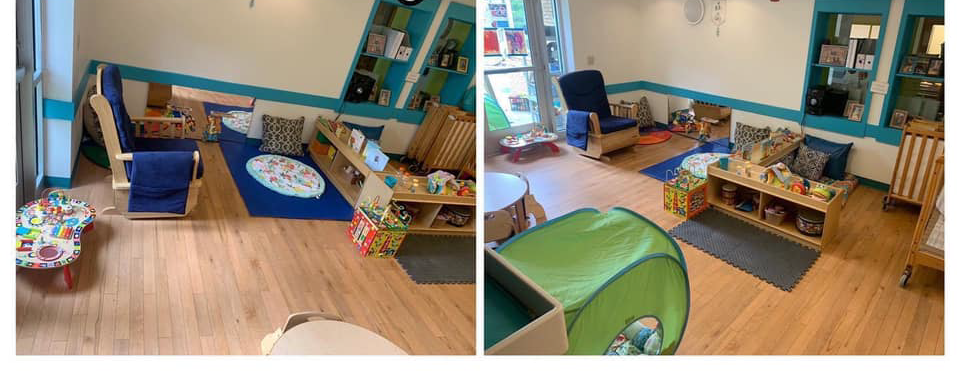
As infants and toddlers move around and explore their environment, they will move toys from place to place. As a result, the floor is often strewn with toys. Be mindful that, when toys are scattered, infants' investigation might be interrupted, stopped, or create a potential hazard. Caregivers should periodically pass through the environment, remove items not being engaged with, and return them to designated storage areas. This practice maintains a safe and inviting play space and keeps toys accessible to the infants.[3] With older infants and toddlers, building in time for children to help with cleanup before transitioning to another activity supports responsible caretaking of their environment.
Keeping the environment safe and in adherence to specific licensing regulations and restrictions can be difficult, if not impossible, to keep in memory. Checklists allow regular safety assessments of indoor and outdoor environments. This documentation helps caregivers keep track of these details and maintain a safe environment.[4]
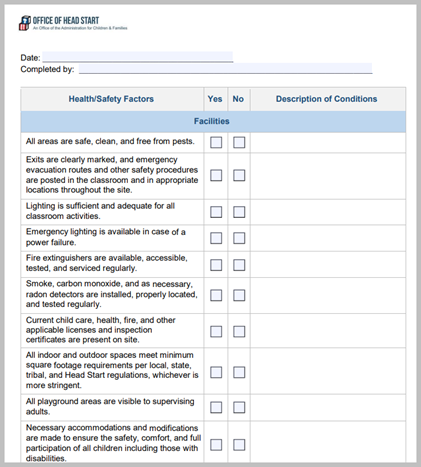
An easy way to create a safe environment and foster relationship building is to meet appropriate group size and child-to-adult ratio limits (Gonzalez-Mena, & Widmeyer Eyer, 2012). Smaller group sizes and lower child-to-adult ratios create and maintain a safe environment for all infants and toddlers.[5] As a baseline, California has licensing requirements to ensure the safety of children in early childhood programs. In California, community care licensing states that infant centers serving children from birth to age 2 need to have a minimum ratio of 1 fully qualified infant teacher to 4 infants. In a room with more than 4 infants, up to a maximum of 12 infants, there must be 1 fully qualified teacher responsible for the direct care and supervision of a maximum of 4 infants. If a fully qualified teacher supervises aides, each aide can be accountable for the direct care and supervision of a maximum of 4 infants. (Teacher-to-Child Ratios in Child Care Centers 2016) Many programs go beyond minimum state requirements to ensure children's safety and prevent accidents and injuries.[6]
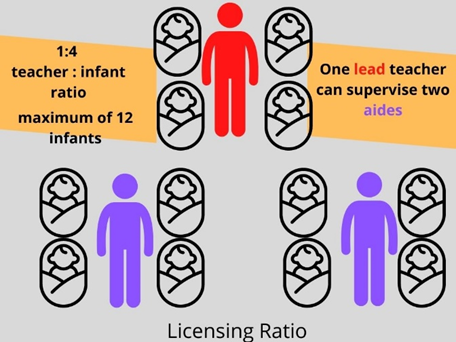
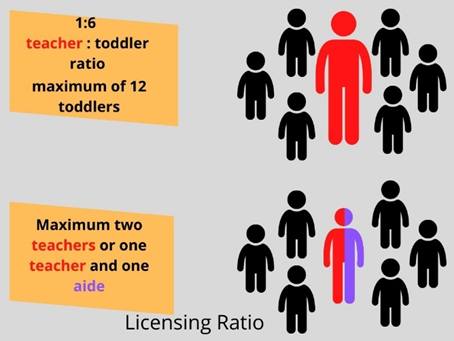
The Program for Infant Toddler Care recommends ratios of 1 adult to 3 or 4 children and a total group size of 6 to 12 children, depending on their ages. The guiding principle is the younger the child, the smaller the group (Small Groups in Center-Based Programs n.d.). A helpful resource for research-based recommendations for group size and ratios is Caring for Our Children FOURTH EDITION National Health and Safety Performance Standards Guidelines for Early Care and Education Programs by the National Resource Center for Health and Safety in Child Care and Early Education, and the Head Start Program Performance Standards.[5]
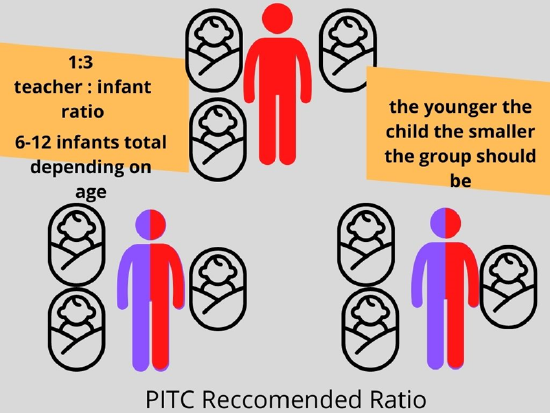
Safety Of Equipment, Materials, And Furnishings
Equipment, materials, furnishings, and play areas should be sturdy, safe, in good repair, and meet the recommendations of the Consumer Product Safety Commission (CPSC). While not an exhaustive list, programs should attend to the following safety hazards:
- Openings that could entrap a child's head or limbs
- Elevated surfaces that are inadequately guarded
- Lack of specified surfacing and fall zones under and around climbable equipment
- Mismatched size and design of equipment for the intended users
- Insufficient spacing between equipment
- Tripping hazards
- Components that can pinch, sheer, or crush body tissues
- Equipment that is known to be hazardous
- Sharp points or corners
- Splinters
- Protruding nails, bolts, or other parts that could entangle clothing or snag skin
- Loose, rusty parts
- Hazardous, small parts that may become detached during normal use or from reasonably foreseeable abuse of the equipment and that present a choking, aspiration, or ingestion hazard to a child
- Strangulation hazards (e.g., straps, strings, etc.)
- Flaking paint
- Paint that contains lead or other hazardous materials
- Tip-over hazards, such as chests, bookshelves, and televisions
Plastic bags that are large enough to pose a suffocation risk, as well as matches, candles, and lighters, should not be accessible to children. [7]
[1] Image by Amanda Taintor is licesned CC BY-NC
[2] Infant Environment by Above & Beyon Child Care and Education Center,MI is used with permission
[3] California Department of Education (CDE Press). Development Foundations: Social-Emotional Development . Is used with permission
[4] Office of Head Start and Office of the Administration for Children and Families. (n.d.). Health and Safety Screener: is in the public domain
[5] U.S. Department of Health & Human Services: Administration for Children and Families. (n.d.). Nurturing Environments. is in the public domain.
[6] California Department of Education (CDE Press). Development Foundations: Social-Emotional Development . Is used with permission
[7] U.S Department of Health & Human Services: Administration for Children and Families. ECLKC Safety of equipment, materials, and furnishings is in the public domain

